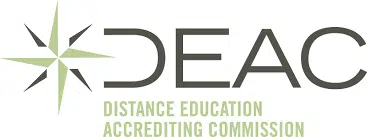Things To Know About Spanish Classroom Culture
Join a global community of over 200,000 TEFL teachers working throughout the world! Enrol me!
If you’ve got your TEFL certificate, you’re presumably all clued up on lesson prep, teaching techniques and phrasal verbs. You might think you’re ready to step into any classroom and teach the socks off your students.
And you probably could.
But classrooms in different countries can be slightly different. What could work in one classroom might not in another, be it because of the students, the learning culture or even the weather. This article is for those TEFL teachers who are thinking about teaching TEFL in Spain.
TTA alum Matt did exactly that.

An American, he taught as a teaching assistant in a primary school in a small town and as a teacher in a high school in Barcelona. Here he’s going to spill the tea on classroom culture in Spain and what you can expect teaching TEFL in Spain.
Matt: After two year spent in the Spanish classroom, I am excited to talk and share with y’all about my experiences and hopefully convince you to consider using your TEFL certificate and teach TEFL in Spain!
But remember: teaching English abroad isn’t just about giving lessons in your native language and working to get your students to excel in it. It’s also understanding that countries’ education systems can be different especially when you compare it to your educational experience.
Matt’s right. Even if a country might look or seem similar to your own, there are probably cultural considerations you need to understand to assimilate into the community – and teach effectively!
What should teachers know about classroom culture in Spain?
When we think of Spain, we’re thinking sangria and siestas! But that can’t apply to Spanish classrooms…can it?
The Spanish classroom is a little more relaxed and chill compared to other countries I have taught in or even my personal experience back in the US.
Matt has also taught in Turkey and South Korea, but now he travels the world while teaching online. Lucky guy!
Students in Spain refer to their teachers by their first name, including myself, which I found very interesting, especially coming from the US where we often had no idea what our teachers’ first names were. If we did know their name, we wouldn’t be caught dead referring to them as such – it would be a major sign of disrespect and insubordination.
While there is, of course, a teacher-student dynamic in Spain, I would view my relationship as a little closer than the teacher-student relationship in other classrooms around the world where a teacher is seen much higher above the student.
How does Spanish classroom culture differ from the West?
The Spanish classroom is much more chill than my classroom experience as a student, and other countries, especially when I had taught in South Korea. As students in Spain refer to their teachers by first name without titles like “Mr.” or “Mrs.”, there is less of a gap between the two.
Sometimes you can feel more like an older friend than the teacher in terms of students’ curiosities and openness to ask about your personal life.
Additionally, I found it very interesting that in Barcelona the teachers and students of age actually smoke cigarettes together in the designated smoking areas.
This represents the classroom culture to me in a nutshell – a more informal environment where you work with the students together as a team to learn English.
How are students expected to behave?
Having taught in Spain in two different schools, I have worked with every single age group from 3 through graduation at 18. This large range of ages has allowed me to see all types of behaviour.
Much like other classrooms around the world, Spanish students are expected to act with respect to their teachers and their classmates. Most of my students were very enthusiastic and curious to have me in the classroom because they got an inside look at my life growing up in the US.
As a whole, I would say that Spanish students across all ages are very engaged in my English classes because I was a native English speaker and not just another Spanish teacher doing language classes.
One thing I will note about behaviour is that you shouldn’t ever bring politics or football into the classroom because that can certainly get students riled up.
Football is a very serious topic in Spain, so mentioning teams, especially Real Madrid or FC Barcelona,can spur a class into a frenzy about who is better and can be often difficult to reel back their attention!
Within Barcelona it’s better not to mention the Spanish government or the political entity of Madrid, as 95% of the Barcelona students arre heavily pro-Catalan separation. I learned both of these tips through personal experience and many unruly classes.
Catalonia is an autonomous region in northeastern Spain. Barcelona is its capital. This region has a language (Catalan), identity and culture distinct from the rest of Spain. Historically there has been a strong movement for this region to separate from the rest of Spain. Because of this, this is a highly contentious issue in Spain, both in and outside Barcelona.
How do students typically show respect for teachers?
As there is no title for Spanish teachers, students show respect for teachers mainly in the same way as back home in American classrooms – raising hands to speak and listening to you as the authoritative figure (being quiet when asked, following directions, and so on).
Nothing else stands out to me as different within Spanish classrooms regarding how respect is demonstrated.
What’s the teacher-student dynamic like?
As a teaching assistant, your main job is to go into a classroom and supplement what the local English teacher is teaching while also acting as a cultural ambassador for your country.
Whether it be making comparisons between American schools to Spanish schools or talking about American customs and holidays. It’s your job to convey these in a fun, engaging manner.
This made the role more informal and engaging for the students as some saw it as an alternative way to learn the language when compared to their normal language instruction. I certainly enjoyed this cultural exchange and I can honestly say that the students did as well.
I was often greeted with “Matt’s here” or “Matt’s class” whenever I walked into the classroom.
Read more: Co-teaching In The EFL Classroom
Are there any unexpected classroom routines?
Something about Spanish classrooms that I really found unexpected and different when compared to American, Korean or Turkish classrooms is the amount of rest time.
In both Galicia and in Barcelona (and I can assume the rest of Spain), there is a long 45-minute “snack break” between the first and second periods, where students can enjoy snacks like a bocadillo (sandwich) with ham and cheese.
At my Barcelona high school, this time can also be spent drinking a coffee at either the school cafeteria or the surrounding cafes.
Lunch is often 1.5 hours, acting as a siesta time, when the Barcelona students usually go home and might even take a nap.
When compared to the 30 minutes given to American students for lunch, this was very shocking to me.
Siestas are periods of rest taken during the day, usually over lunchtime and early afternoon. During a siesta, people can have a nap or just relax. Many countries take siestas but refer to them by a different name. Research has shown that siestas improve mood and productivity while reducing stress.
In Spain, people are expected to go home for lunch and a nap before returning to work or school after a pre-determined time. This is done throughout the country – even shops are closed at this time.
How does academic pressure affect students?
Within my school in Galicia, I wouldn’t say I ever saw any academic pressure that affected my students. The expectations for learning English were much lower than in Barcelona where the students were preparing for university.
Many students struggle in Barcelona with TOEFL preparation as many students want to attend university in England or the US. Students would complain to me about how difficult juggling school and TOEFL preparation was.
Also, there are many tests administered in Barcelona that often leave students burnt out which is visible at certain times of the year.
Read more: EFL Exams Explained
What are class sizes like?
Between my schools in Galicia and Barcelona, the class sizes varied.
My Galician school served a small town. The classrooms had no more than 18 students per class.
But Barcelona is Spain’s second-largest city with large institutions. My high school classes generally had about 35 students.
As you can imagine, these classes required a little more work in maintaining your students’ attention.
Read more: Top Tips For Teaching Teens In The EFL Classroom
What role do parents play in classroom expectations?
I only ever saw parents in Galicia as I took the bus with the students to and from work. Parents were often excited to see me as they were enthused to have a native English speaker for their child. As I lived in a small town, I always ran into my students and their families, always to the delight of everyone involved.
But I never had to interact with the parents as part of my role within the school ,as was the case at my position in Barcelona.
What do teachers wear to school in Spain?
For both schools, there was no dress code but I always sought to wear something more professional – khaki pants and a polo or button-down shirt.
I always wanted to try and emulate what I had seen from my teachers in the US. However, as Spanish classrooms are more relaxed than other classrooms I had seen, the male teachers usually wear what the students wear: T-shirts, jeans, and/or shorts.
Any tips for teaching TEFL in Spanish classrooms?
My advice for anyone looking to teach English as a foreign language in any school, not just Spain, is the same – go in with an open mind and be ready to adapt. You should generally throw away what you know about previous institutions or what you had experienced personally and be as flexible as can be.
Luckily, the Spanish classroom is quite relaxed. With that being said, be ready to be patient with administrative things both within the classroom and life on the ground as I believe the stereotype of “Spanish time” is true…things get done slower than other places and sometimes that’s alright.
My time in Spain was incredible and a great first TEFL experience. Spain allows you to adapt to TEFL in the most chill way possible.
If you plan on pursuing TEFL for years to come or even as a career in itself, Spain is the perfect first stop.
Accreditation & Quality Assurance
The TEFL Academy was the world’s first TEFL course provider to receive official recognition from government regulated awarding bodies in both the USA and UK. This means when you graduate you’ll hold a globally recognised Level 3 (120hr) Certificate or Level 5 (168hr) Diploma, meaning you can find work anywhere and apply for jobs immediately.
 United States
US
United States
US


















